Phil Binkow, CEO of Financial Operations Networks (FONS)
It’s Monday morning, and your finance team is buried under a mountain of supplier payments that need processing before the end of the day. As part of your compliance responsibilities, every new vendor and every payment must be checked against the Office of Foreign Assets Control’s (OFAC’s) Specially Designated Nationals (SDN) list.
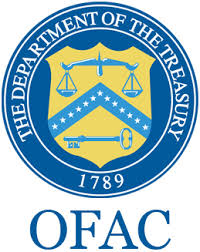
Without automation, this means manually logging into government databases, copying and pasting vendor names, and interpreting matches line by line. The process is time-consuming, prone to human error, and frustrating for everyone involved. And the risk of overlooking a flagged entity or delaying payments is always hanging over the team.
Why OFAC Checking and Sanctions Screening Matter More Than Ever
Global politics have made sanctions compliance a front-page issue. Geopolitical conflicts, trade restrictions, and rapid regulatory changes have expanded the number of sanctioned individuals and organizations worldwide. In fact, OFAC added over 2,000 individuals and entities to its sanctions lists in 2023 alone, and the number continues to grow in response to conflicts and global instability.
Businesses of all sizes, whether they operate internationally or domestically, are under pressure to ensure they don’t accidentally do business with prohibited entities. Regulators are stepping up enforcement, and fines for violations are growing larger and more public. In this environment, organizations that rely on manual processes are not just inefficient; they’re dangerously exposed.
Automated OFAC checking and sanctions screening ensure a compliance program can keep pace with the speed and complexity of global sanctions.
Red Flags: Signs You Need OFAC Automation Now
If you recognize any of these, it’s time to act:
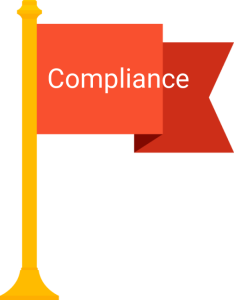
- Your OFAC checks delay supplier onboarding or hold up payment cycles. That not only frustrates vendors but also creates ripple effects across your supply chain. Over time, these delays can erode trust and impact competitiveness.
- Compliance audits require scrambling to gather documentation. This increases audit stress, wastes valuable staff time, and signals weak controls to regulators.
- Teams rely on spreadsheets, emails, or manual lookups to complete checks. These methods are highly prone to human error and produce fragmented records that don’t stand up to regulatory review.
- Compliance responsibilities fall on one or two overburdened employees. If those employees are unavailable, the entire process can grind to a halt, leaving an organization exposed.
What an Automated OFAC Checking Solution Is and How It Works
Imagine replacing hours of tedious manual checks with a seamless, always-on compliance safety net. An automated OFAC checking solution integrates directly into an organization’s vendor onboarding and payment workflows, so screening happens automatically in the background. Instead of manually searching the SDN list, the system instantly screens vendor data against OFAC and other global watchlists as information is entered.
If there’s a match, the system flags it in real time, providing alerts and documentation to help you investigate quickly. This eliminates the guesswork, ensures consistency, and creates an audit-ready record of compliance activities. For organizations under regulatory scrutiny, this capability shifts compliance from a burden to a strategic advantage.
A Day in the Life with Automation
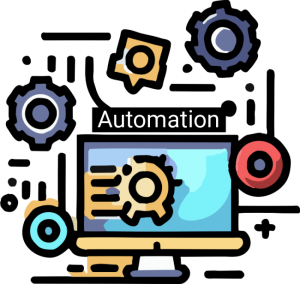
Now picture a different Monday morning—one where compliance is built into every step of the process. Payments are queued, invoices are matched, and suppliers are automatically screened against OFAC lists in the background. Any potential match is flagged instantly for review, while all other transactions move forward without delay.
The compliance team can focus on resolving exceptions instead of spending hours on manual checks. Payment cycles are faster, risk exposure is lower, and your organization has confidence that it is meeting regulatory requirements.
The difference is night and day: instead of reacting to compliance challenges, an organization’s team is proactively protected.
The Cost of Non-Compliance
When organizations fall short of OFAC requirements, the consequences are severe. Civil penalties can reach millions of dollars – even for unintentional violations. In 2023, several mid-sized companies paid fines exceeding $1 million for inadequate screening controls.
Reputational damage is another lasting consequence: once your organization is publicly tied to a sanctioned entity, rebuilding trust with customers, suppliers, and regulators is a long road. Manual processes also add hidden costs, including slower supplier payments, increased employee burnout, and missed opportunities for stronger vendor relationships.
Non-compliance, or weak compliance, costs far more than automation ever will.
Benefits of an Automated OFAC Checking Solution
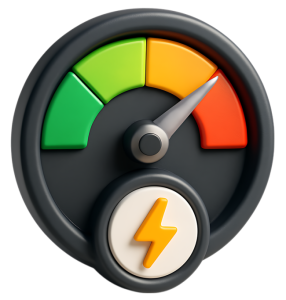
Compliance isn’t just about avoiding penalties. It’s about building resilience, earning trust, and ensuring business continuity. Manual checks leave gaps that regulators, auditors, and even an organization’s suppliers will eventually notice. By automating OFAC screening, organizations not only protect against fines but also gain strategic advantages that ripple across an organization.
The benefits extend far beyond compliance. They impact efficiency, reputation, and even supplier relationships, driving long-term success.
- Reduced risk of non-compliance. By automating checks against OFAC and other watchlists, organizations minimize the chance of costly violations and penalties. Regulators are increasingly intolerant of “we didn’t know” as a defense, so automation provides critical assurance. It also helps avoid reputational damage that comes from being tied to sanctioned entities, which can linger long after a fine is paid.
- Time savings. Automation eliminates the need for repetitive manual lookups, freeing staff to focus on higher-value work. Teams that spend hours searching can reallocate time on fraud mitigation, vendor relationship management, or strategic planning. The cumulative time saved across dozens or hundreds of checks each month translates into significant productivity gains.
- Improved accuracy. Automated systems apply the same checks every time, reducing the risk of human error and oversight. Unlike manual processes that vary from person to person, automation ensures consistency across the organization. This consistency builds trust with regulators and demonstrates a strong culture of compliance.
- Better audit preparedness. With every check logged and documented, your organization has a clear compliance trail ready for regulators and auditors. Generating audit reports takes minutes instead of days, easing pressure during reviews. This level of transparency shows stakeholders, internal and external, that your compliance processes are robust and reliable.
- Enhanced supplier relationships. Faster approvals and fewer delays mean suppliers are onboarded and paid more quickly, improving trust and satisfaction. Vendors notice when payments are processed without unnecessary hiccups, and this builds stronger long-term partnerships. Over time, smoother vendor relationships can even improve an organization’s negotiating position and strengthen supply chain resilience.
Key Considerations When Evaluating Automated OFAC Checking Solutions
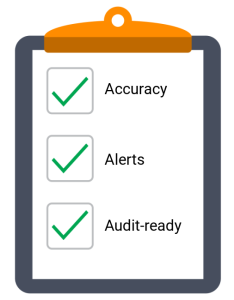
Choosing the right solution is as important as deciding to automate in the first place. Not all systems are created equally, and the wrong choice can leave gaps in an organization’s compliance strategy.
- Integration capabilities. Does it seamlessly connect with your existing systems (enterprise resource planning, vendor onboarding portals, and payment platforms)? A system that requires duplicate data entry will slow teams down and reduce adoption. Look for solutions that plug directly into existing workflows without disrupting daily operations.
- Coverage beyond OFAC. Will it screen against additional sanctions lists, politically exposed persons (PEP) lists, and global watchlists? A narrow focus on OFAC alone may not meet an organization’s risk management requirements. Global coverage ensures an organization is protected no matter where its vendors or partners operate.
- Real-time alerts. Does it flag potential matches instantly so a team can act quickly? Delayed alerts can cause payments to slip through before issues are caught. Real-time notifications allow compliance officers to respond before risks become liabilities.
- Audit-ready reporting. Can the system generate compliance reports and maintain a clear trail of checks performed? Audit trails shouldn’t require extra work from your staff; they should be built into the system. This capability not only satisfies regulators but also simplifies internal oversight.
- Ease of use. Is the interface intuitive and simple enough for staff across departments to adopt quickly? Complex tools can become shelfware if employees resist using them. The best systems combine robust functionality with a user-friendly design that encourages widespread adoption.
- Scalability. Will the solution handle growth as your vendor base expands and regulatory requirements evolve? A system that works today but can’t scale tomorrow leaves organizations exposed. Choose technology that can grow, ensuring compliance readiness for years to come.
Final Thoughts
The risks of manual OFAC compliance are too great in today’s fast-moving regulatory environment. As sanctions lists expand and enforcement becomes more aggressive, organizations that lag in automation are putting themselves at unnecessary risk. Recent enforcement actions show that regulators are holding businesses accountable regardless of size or intent, and suppliers expect faster, smoother onboarding than ever before.
The good news is that automating OFAC screening is easier than many organizations realize. By implementing the right solution, organizations not only safeguard against penalties but also streamline operations, protect their reputation, and free their team to focus on strategic priorities. The difference between manual and automated compliance is protection against today’s most pressing risks. Now is the time to act.
About the Author

Phil Binkow is CEO of Financial Operations Networks (FON), developer of VendorInfo, InvoiceInfo and the Vendor Information Management Center of Excellence, a leading suite of software-as-a-service platforms that allow finance teams to onboard, verify and manage suppliers with confidence, reduce cost and risk and strengthen compliance.
Before founding Financial Operations Networks, Phil served as CEO of PayTECH, a leading electronic invoice processing, disbursements, and spend analytics platform that supported companies such as Oracle, Cisco, The Gap, Charles Schwab, JP Morgan Chase, and NCR. Under Phil, PayTECH grew to process and pay over 100 million invoices annually.
In 2002, FON founded The Accounts Payable Network (TAPN), which grew to become the world’s largest accounts payable training and certification organization.
Recent PaymentsNEXT news:

